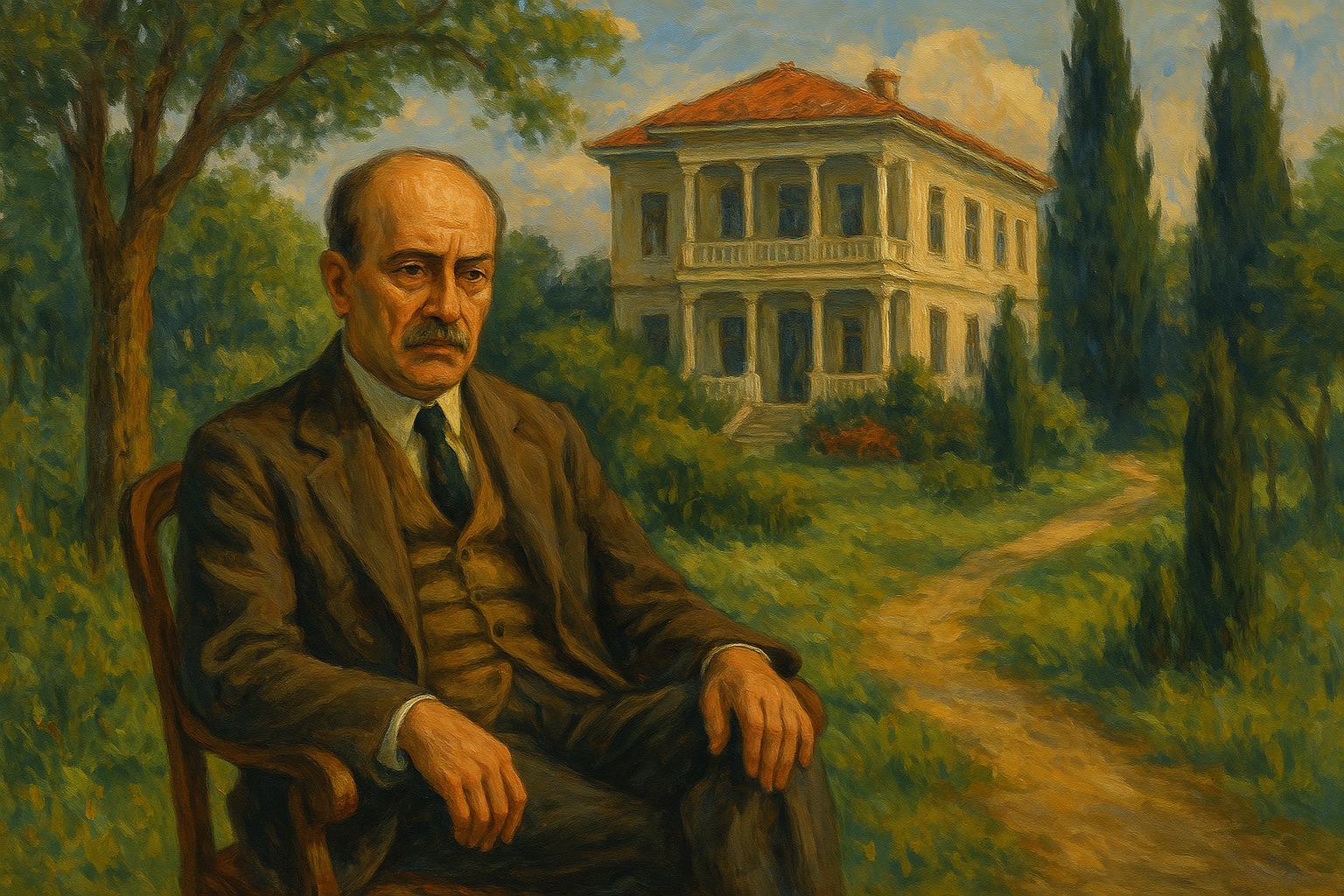Our Uncle in Çamlıca, the second novel by Abdülhak Şinasi Hisar, is not so much a classic novel in its classical forms, but rather a narrative distilled from the author's personal memories. At the center of the narrative is Hacı Vamık Efendi, the narrator's uncle, whom he describes as "mad." The novel progresses not so much through storytelling but through introspection, character analysis, and setting description.
As a genre, it presents a structure intertwined with memoir novel, psychological portrait novel, and, at times, humorous essay. The structure progresses not so much by relying on a traditional plot, but through sections in the form of small anecdotes and humorous stories.

Hacı Vamık Efendi Generated by Artificial Intelligence
Plot Summary and Themes
The novel focuses on the life of Vamık Efendi, the author's uncle, whom he describes as "mad." Hacı Vamık Efendi is both a tragic and humorous character with his inconsistent religiosity, excessive formalism, fear of microbes, gluttony, tendency to shy away from women, and absurd behaviors in his official life.
Through this character, Hisar presents a social typology. Old Istanbul life, especially the mansions of Çamlıca, the crowded family structure, neighborhood culture, and state bureaucracy form the background of the narrative. Among the main themes are the following:
- Memory and the feeling of past times
- Conflict between tradition and modernization
- Fondness for external appearance (formalism)
- Psychological deviations and societal perception
- Criticisms regarding marriage, women, and family structure
- The absurdity of bureaucracy
- Childhood and intra-family observation
Main Character: Hacı Vamık Efendi
Hacı Vamık Efendi is, in Abdülhak Şinasi Hisar's words, a "mad" but endearing character. In reality, rather than true "madness," he is an obsessive and neurotic type who does not fit into society's framework. With his words, actions, and outlook on life, he both amuses and annoys those around him.
Modern psychoanalytic readings suggest that this character symbolizes the author's own unconscious obsessions, even asserting that it is an autobiographical reflection. Hacı Vamık is also the version of the traditional Ottoman intellectual who struggles to adapt to a changing world.
Narrator and Style
The novel is written in the first-person narrative. The narrator speaks with an attitude that swings between love, astonishment, disappointment, and at times sarcasm towards his uncle. The author's unique ornate, musical, and close to classical Turkish literary style is also prominent in this work.
Paragraph structures are long; description, simile, repetition, and rhythmic sentences are its prominent features. The novel sometimes takes on the atmosphere of a fairy-tale narrative.
Setting and Time
As for the setting, Çamlıca, especially the mansion in Çamlıca, is the main space of the novel. The interior of the house, its garden, its street, and even the atmosphere of the district are treated like characters. The time corresponds to the author's childhood and early youth, specifically the years of Abdülhamit II and the Second Constitutional Era. However, time is presented not so much through chronological progression but with a circular structure where memories are intertwined.
Literary Value and Place
Our Uncle in Çamlıca is one of the early examples in Turkish literature where the memoir and novel genres merge. The work, which explores a collective past starting from individual memory with a Proustian approach, is considered one of Abdülhak Şinasi Hisar's most characteristic works, especially in terms of language and style. Its literary value is also high because it offers a perspective that oscillates between humor and melancholy, tradition and change, and the individual and society.


